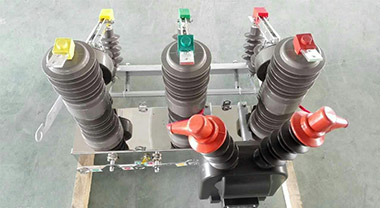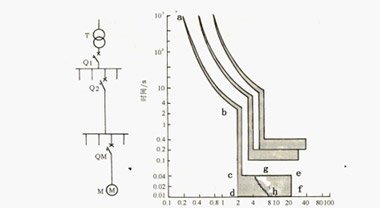Definition and classification of low-voltage circuit breakers
Definition and classification of low-voltage circuit breakers
1. Definition
Low-voltage circuit breaker is a kind of electrical distribution equipment used in low-voltage power grid [AC (50Hz or 60Hz rated voltage of 120 and below, DC rated voltage of 1200v and below) distribution equipment. According to its purpose, low-voltage circuit breaker is defined as: Switching devices that connect, carry and break currents under normal circuit conditions can also be switched on, carrying a certain period of time and breaking current under specified abnormal conditions (such as overload, short circuit, undervoltage, and single-phase ground fault). In the past, it was also called automatic switch, air switch and air circuit breaker (air switch, air switch).
2. Classification of low-voltage circuit breakers
Low-voltage circuit breakers can be divided into: universal type (also called frame type), plastic case type, de-excitation type, explosive type, vacuum and phase selection closed type, etc. according to their structure, function and purpose. The latter four are used on special occasions and will not be discussed. There are two main types of circuit breakers: universal type and plastic case (mold compression molded case). According to their use categories, the International Electrotechnical Commission's IEC standard and my country's corresponding standards are further divided into two types: A and B.
Type A: It refers to the selective protection of another short-circuit protection device connected in series on the load side by the circuit breaker in the case of a short circuit. This kind of circuit breaker does not have the requirement of rated short-time withstand current and belongs to class A circuit breaker; except for short-circuit conditions, such as selective protection, short delay can also be set, but its short-time withstand current is comparable to the standard Value (12In or 5kA, and 30kA when In> 250OA is as small as 30kA. A large number of molded case circuit breakers, miniature circuit breakers and some universal circuit breakers with low current specifications belong to Class A. Its obvious feature is: the protection performance is only Two-stage protection with long time delay of overload and instantaneous short circuit.
Type B: It refers to the selective protection of a short-circuit protection device in the case of a short circuit when the circuit breaker is clearly connected in series on the load side. That is, in the case of a short circuit, the selective protection of a short time delay (adjustable) is made. A type of circuit breaker requires rated short-time withstand current, and most of the universal types belong to type B.
At present, the plastic case type using the intelligent controller (trip) also belongs to category B. Its obvious characteristics are: the protection characteristics have three-stage protection of overload long delay, short circuit transient, and short circuit short delay. Most suitable for selective protection.
If it is further subdivided, that is, according to the objects of protection, it can basically be divided into four types:
a. Distribution protection type;
b. Motor protection type;
c. Protection type for household or similar places (previously called wire protection type, now called small or miniature circuit breaker belongs to this category);
d. Residual current (leakage) protection type.
3. Standard
The performance of different types of circuit breakers should meet the following standards:
(1). Power distribution type. The circuit breaker should comply with GB 14048.2 "Low-voltage switchgear and control equipment, low-voltage circuit breaker" (equivalent to the IEC 947-2 standard of the same name);
(2). Motor protection type. Should comply with GB 14048.2 and GB 14048.4 (low-voltage switchgear and control equipment, low-voltage electromechanical contactors and motor starters" (equivalent to the IEC 947-4 standard of the same name);
(3). Protection type for household and similar places. It shall comply with GB 10963 (Overcurrent Protection Circuit Breaker for Household and Similar Household Places) (equivalent to the IEC898 standard of the same name);
(4). Residual current protection type. It shall comply with GB 6829 "General requirements for residual current operated circuit breakers" and GB 16916.1 "General requirements for residual current operated circuit breakers without overcurrent protection for household or similar purposes" (equivalent to IEC1008), GB 16917.1 "Household General requirements for residual current operated circuit breakers with overcurrent protection for or similar purposes" (equivalent to IEC1009.




